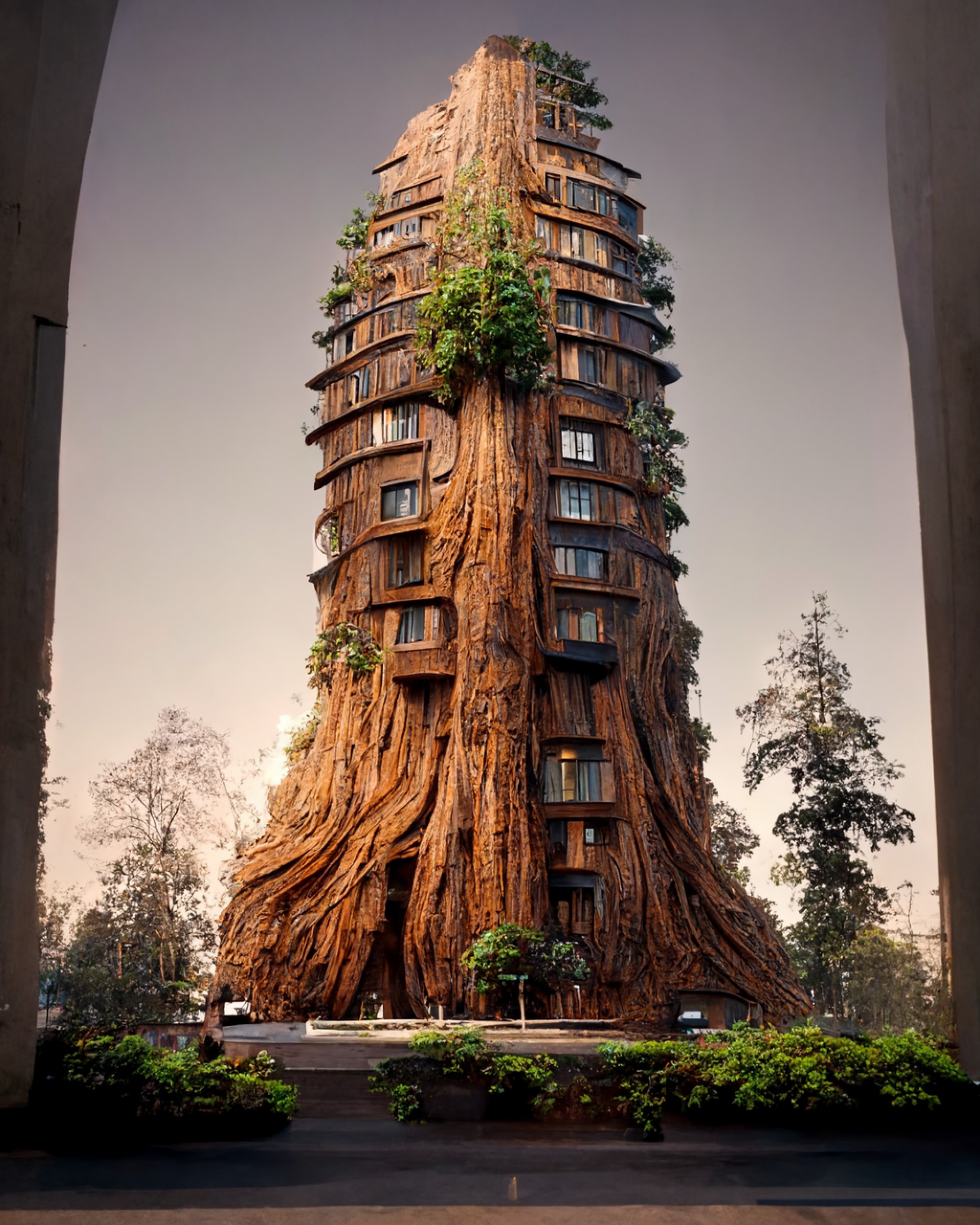AI x Surreal Symbiotic Architecture
- Location: California, United States of America (USA)
- Year: 2022
- Work Type: Professional
- Institute / Firm: Manas Bhatia
- Status: Conceptual
AI generated symbiotic architecture that breathes and grow:
The project began as an investigation into the interactions we have all had with nature, such as appreciating a tree's shade on a hot day, reading a newspaper in a courtyard under a tree, or simply hanging out in a park to take in the changing hues of the leaves. Building on these observations, came the idea of a "utopian future" in which buildings are not machines made of steel or concrete is presented. Instead, the structure is alive and has the ability to grow and breathe. Imagine a Hyperion tree (coast redwood tree in California that is considered the world's tallest known living tree, measuring 115.92 m) that has been hollowed out, with apartments facing inward and natural light flooding in to create an enchanting bio-atrium. Magical and yet, in a natural way, so pragmatist. Is it possible to design symbiotic architecture? Can structures grow? Can the envelope in which we live breathe as creatures do instead of us dwelling in air-conditioned concrete and glass boxes we call apartments?"
The design is achieved by using AI tools like Midjourney to imagine a surreal future that has ‘symbiotic’ architectural apartment towers that look like giant hollow redwood trees. Inspired by the Hyperion tree, the Indian architect seeks to go beyond the realm of physical architectural design to present a series of AI-generated images, and drawings of the apartments that really makes one question the idea of such symbiotic buildings
Building on the deep relationship with nature Manas has been exploring the ideas of how patterns occur in nature, how networks are formed in the dwellings of micro creatures, and how plants behave according to the natural stimuli and such theories.
"I have always been fascinated by how small insects and creatures create their dwellings in nature. Ants for example create their dwellings with intricate networks in the soil. If humans could create buildings that grow and breathe like plants do, what an amazing world would that be to live in!", quotes Bhatia
Aiding his conceptual research imaginations Manas utilizes the AI program Midjourney, a tool that uses a series of words/phrases termed “prompt” to generate an array of images based on the prompt. For this project a combination of words like “giant”,”hollowed”,”tree”,”stairs”,”facade”and ”plants” were used as the prompt. Then multiple iterations were run and the prompt was altered with the iterations to achieve the desired results. Bhatia comments, "The key aspect of such AI tools is the choice of words. Sometimes one may not achieve the expected result. However, the generated output gives way to an alternative vision that even the user may have not thought of and that is the beauty of it!"
The new age technology and tools available will aid architects and designers to create their visions with more convenience, directly translating their thoughts into drawings, renderings, and 3D models making the industry faster and more efficient. Using technology combined with the knowledge of natural systems, architects may be able to create more biologically integrated designs.
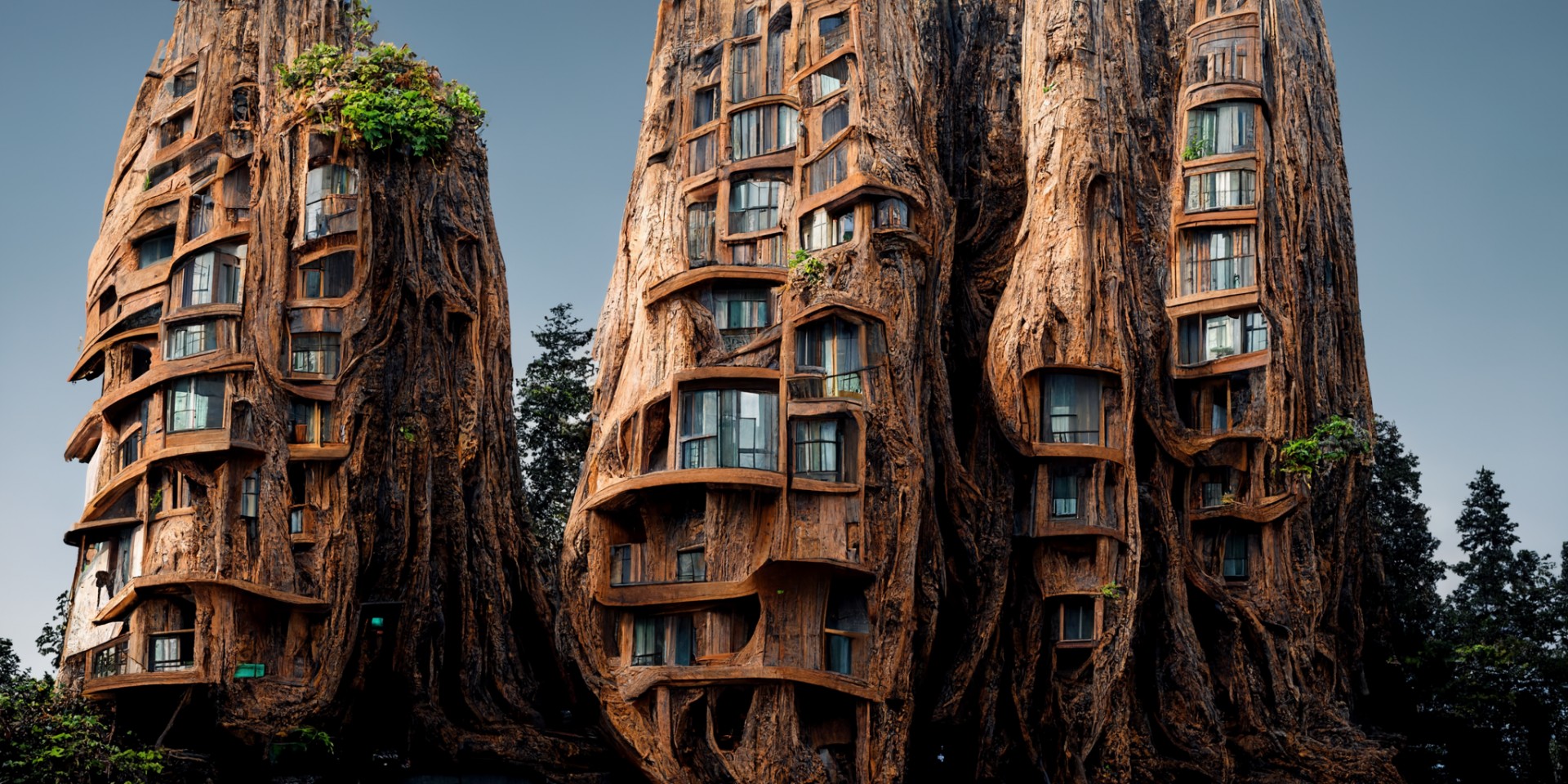 It is fascinating how small insects and creatures create their dwellings in nature. Ants for example make their dwellings with intricate networks in the soil. If humans could create buildings that grow and breathe like plants do, what a fantastic world would that be to live in? The idea of this project was to explore the potential of combining such observations in nature with architecture using AI. How can we get inspired by nature and use the natural systems in an architectural design that is greener, sustainable,
and coexists with nature?
It is fascinating how small insects and creatures create their dwellings in nature. Ants for example make their dwellings with intricate networks in the soil. If humans could create buildings that grow and breathe like plants do, what a fantastic world would that be to live in? The idea of this project was to explore the potential of combining such observations in nature with architecture using AI. How can we get inspired by nature and use the natural systems in an architectural design that is greener, sustainable,
and coexists with nature?
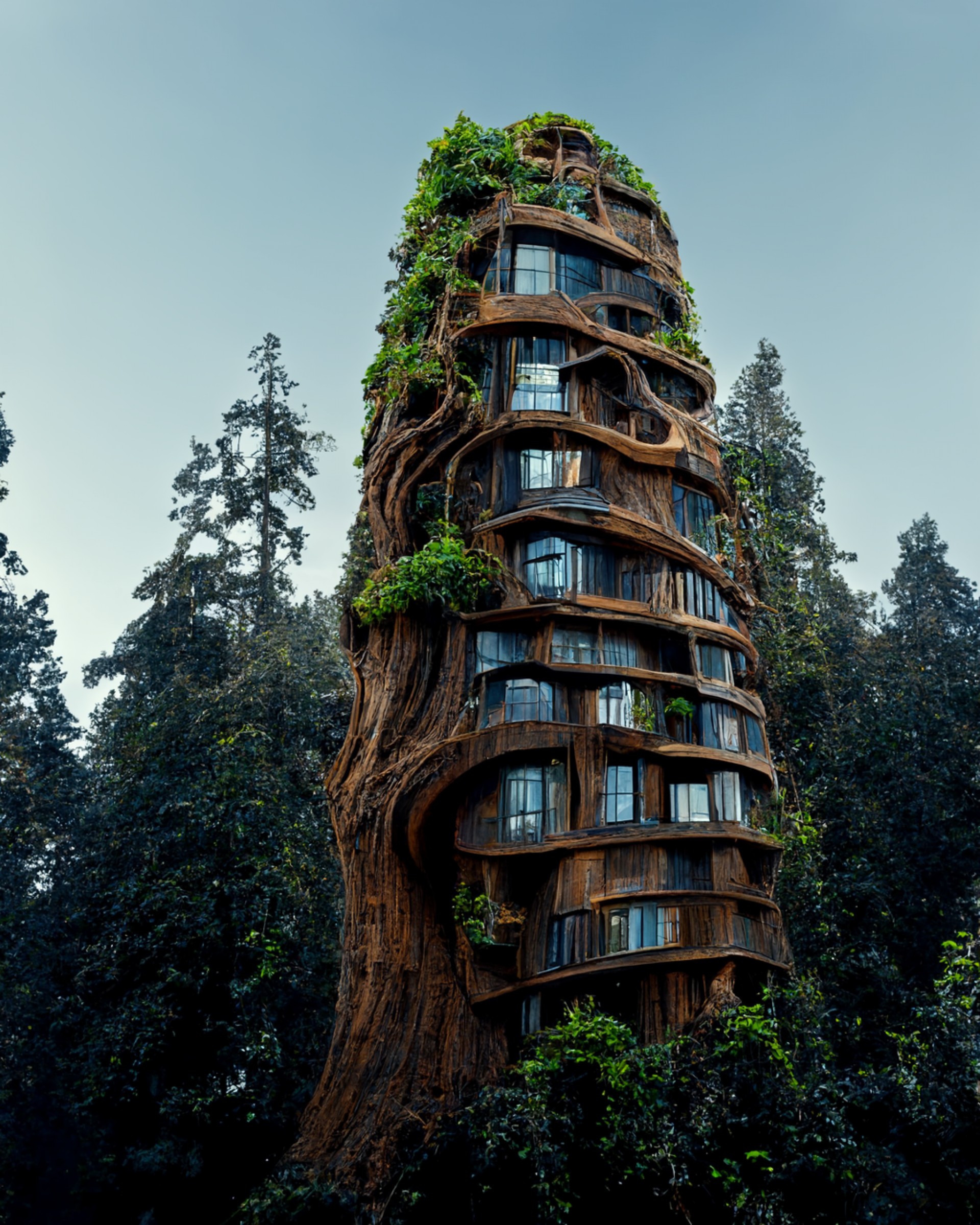 Exterior view of a single tower with bio-receptive skin/building envelope
Exterior view of a single tower with bio-receptive skin/building envelope
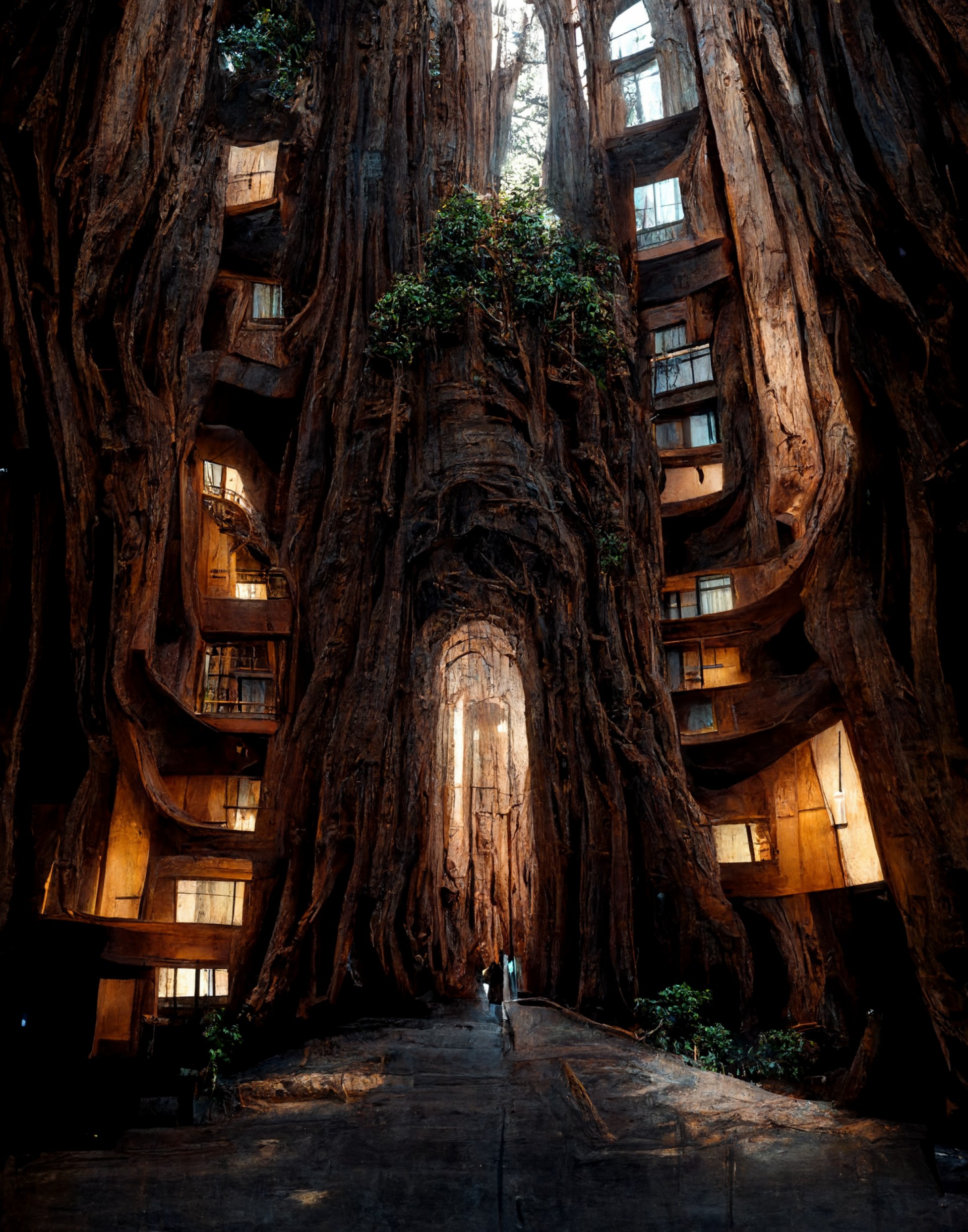 Surreal, arched entrance to the tower with openings to allow natural light inside the structure
Surreal, arched entrance to the tower with openings to allow natural light inside the structure
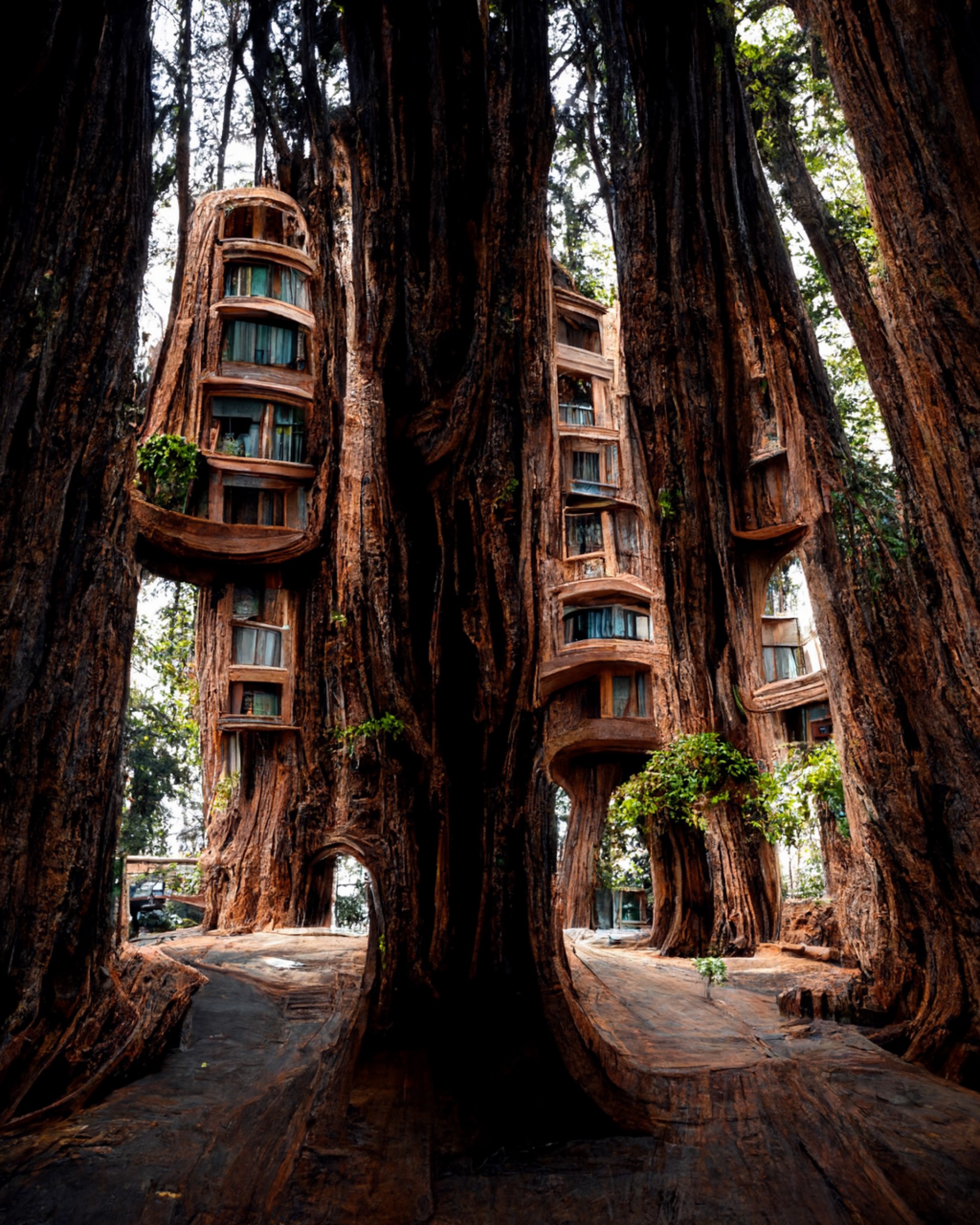 Exterior view of a network of apartments interconnected in an organic fashion
Exterior view of a network of apartments interconnected in an organic fashion
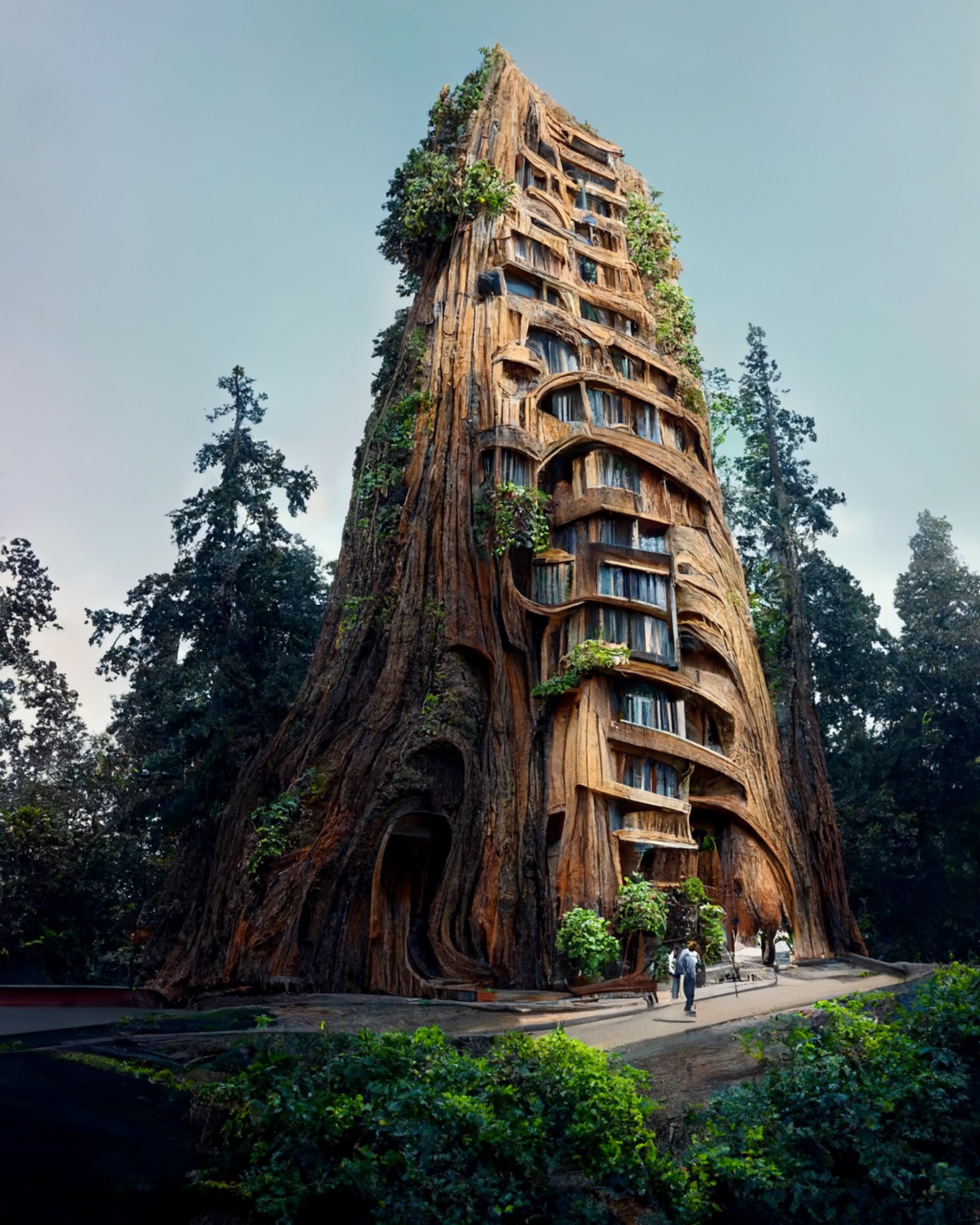 Exterior view of a single housing tower with bio-receptive skin/building envelope
Exterior view of a single housing tower with bio-receptive skin/building envelope
.png) The central spine acts as the structural core for the tower. Organic structural support extends from the spine to support the housing tower
The central spine acts as the structural core for the tower. Organic structural support extends from the spine to support the housing tower
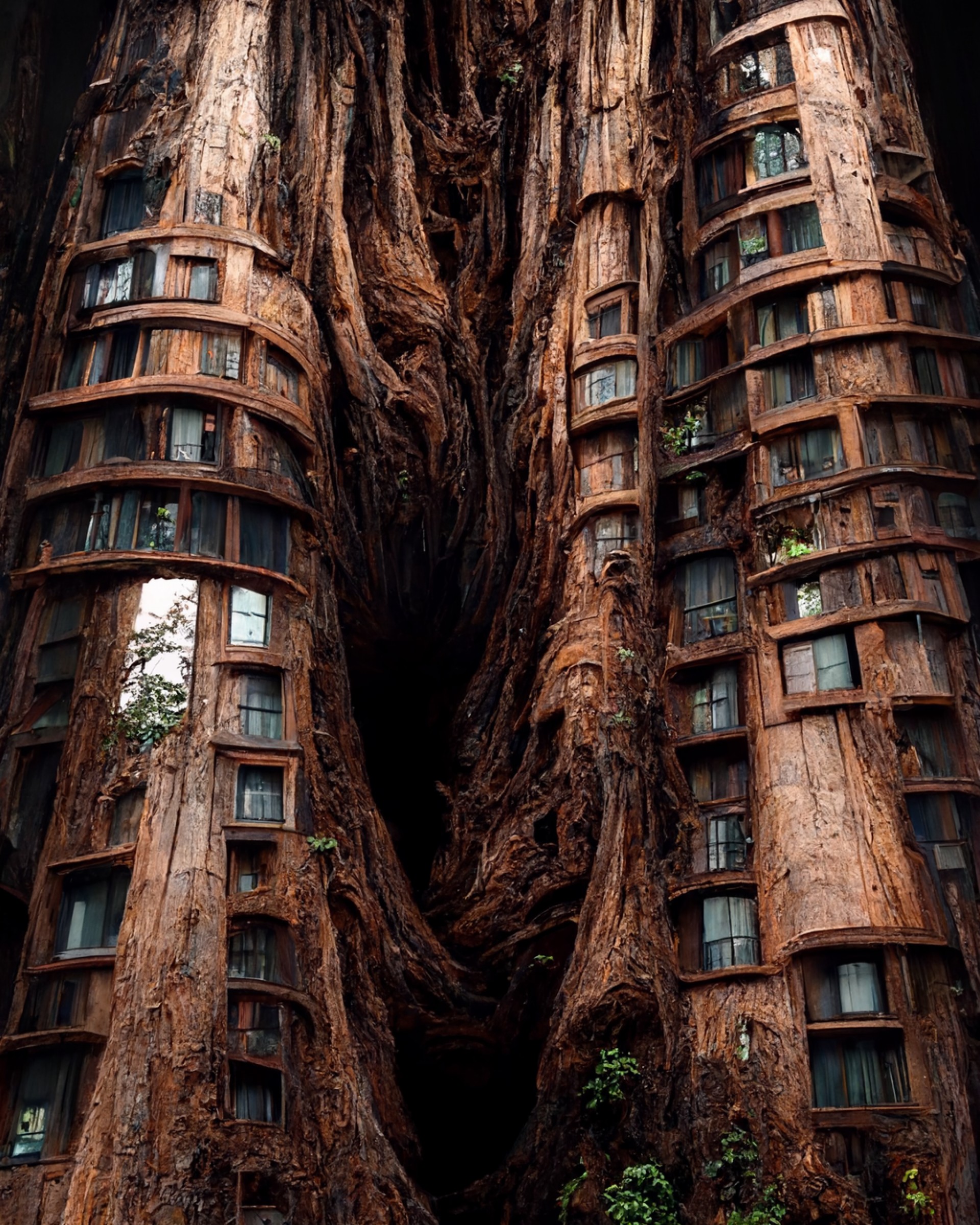 Symbiotic building facade
Symbiotic building facade
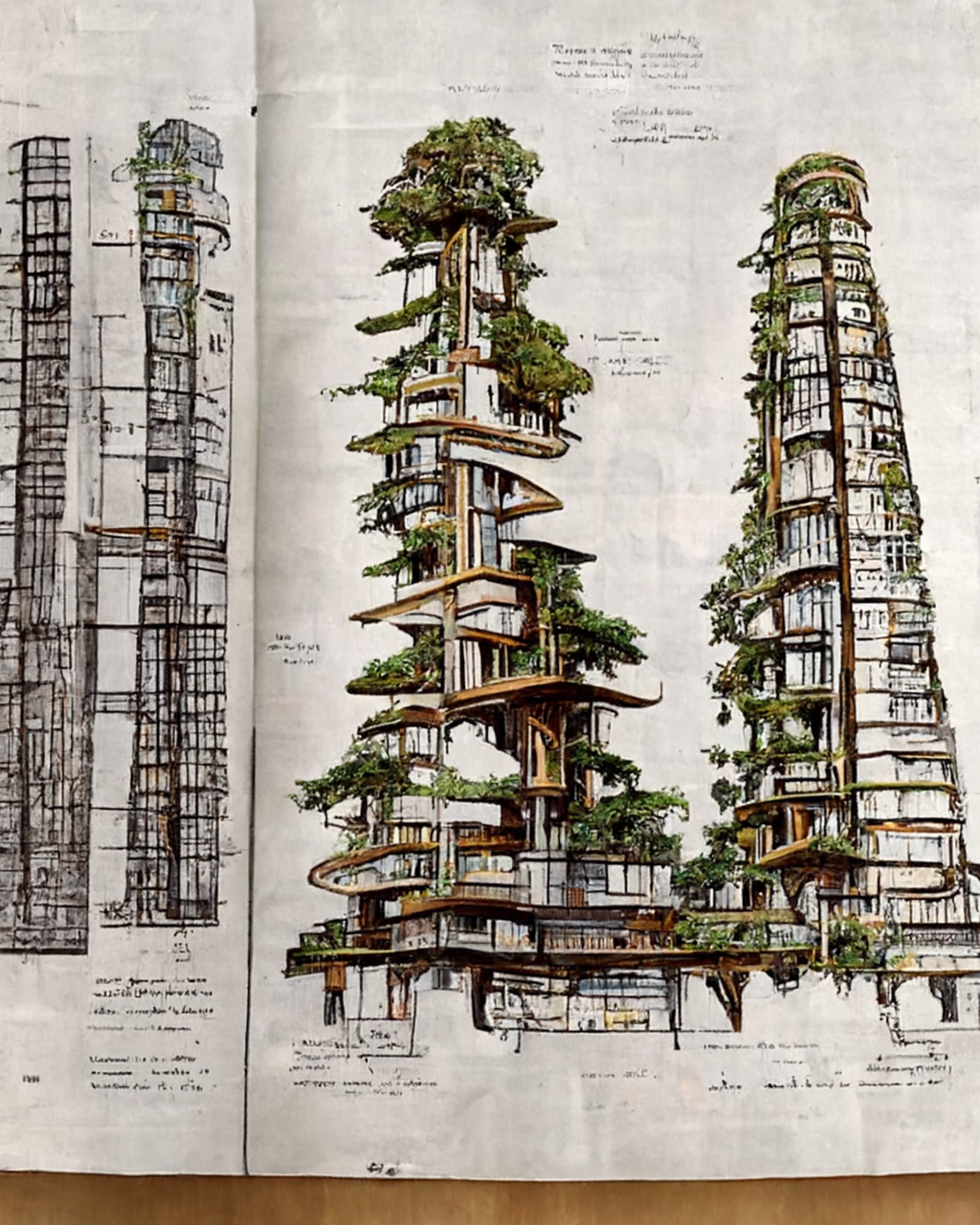 AI-generated drawings of the housing towers
AI-generated drawings of the housing towers
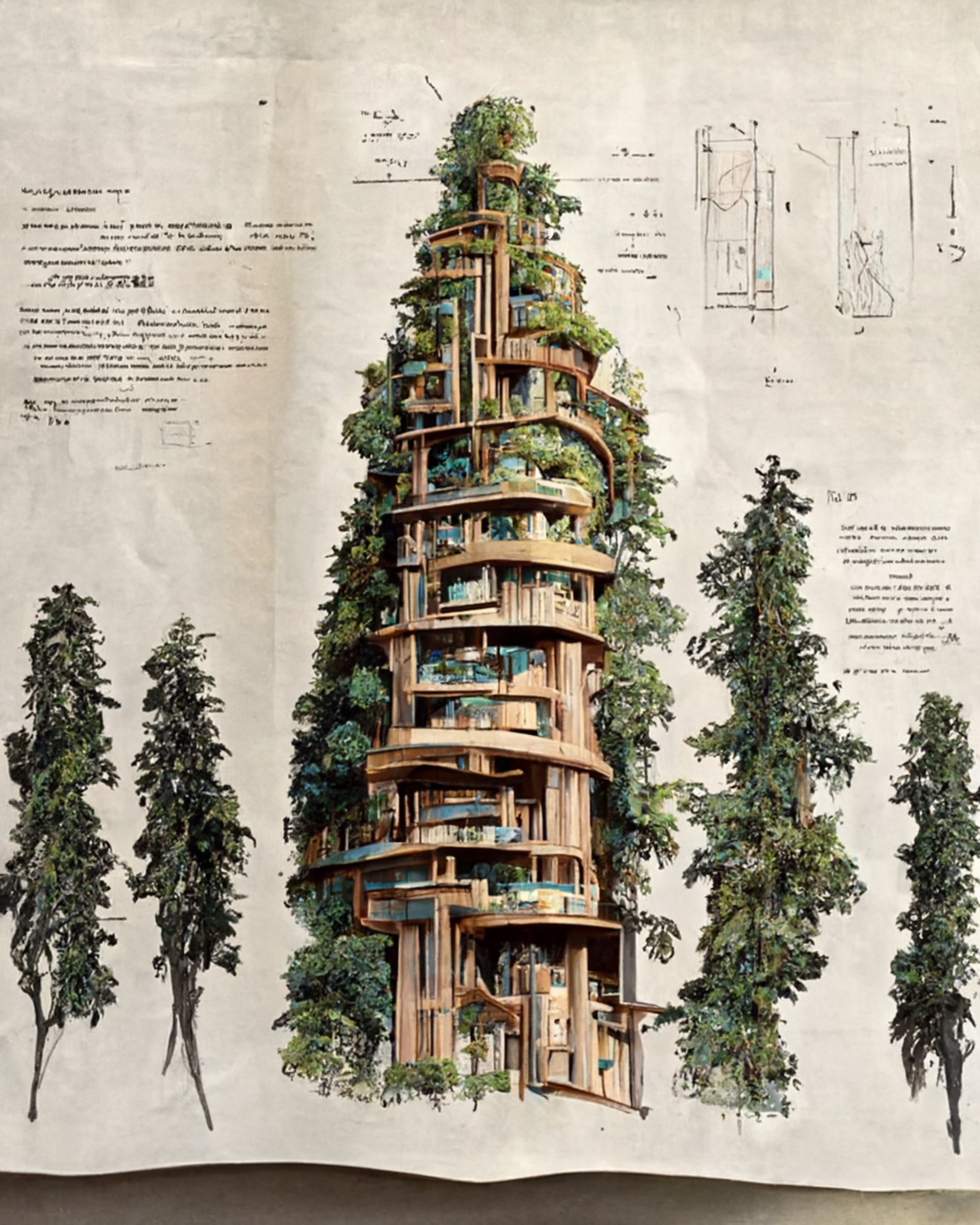 AI-generated drawings of the housing towers
AI-generated drawings of the housing towers
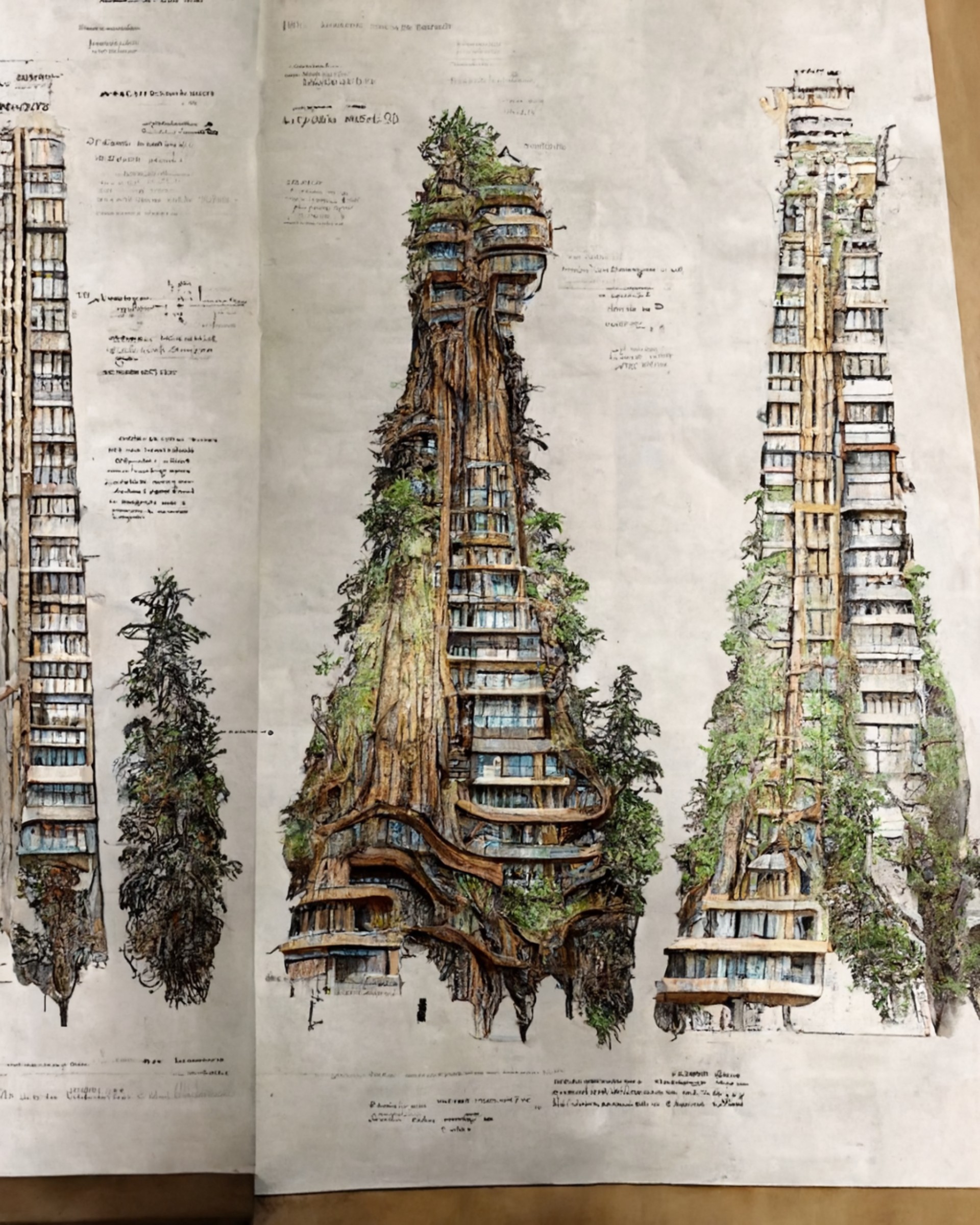 AI-generated drawings of the housing towers
AI-generated drawings of the housing towers
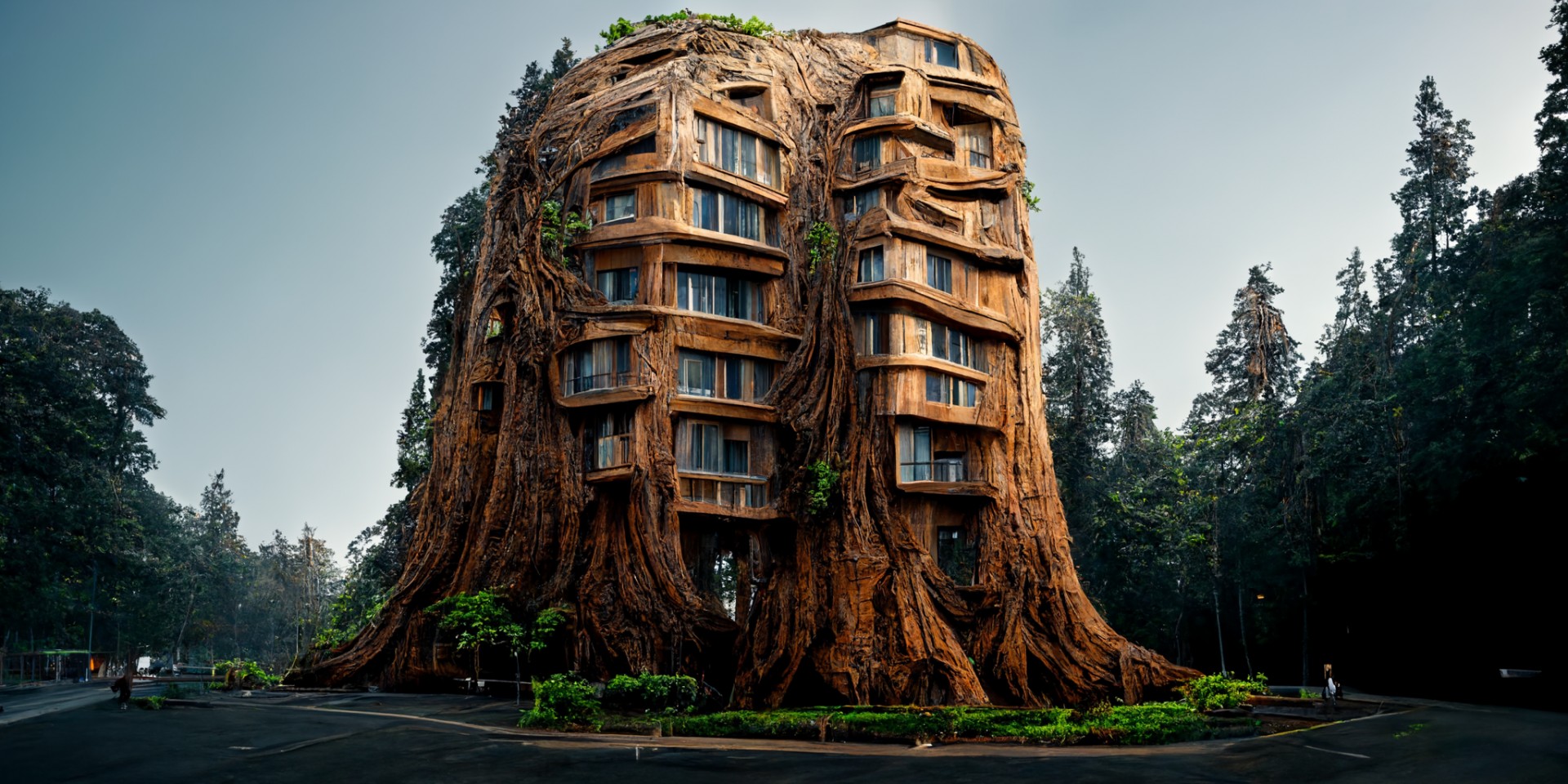
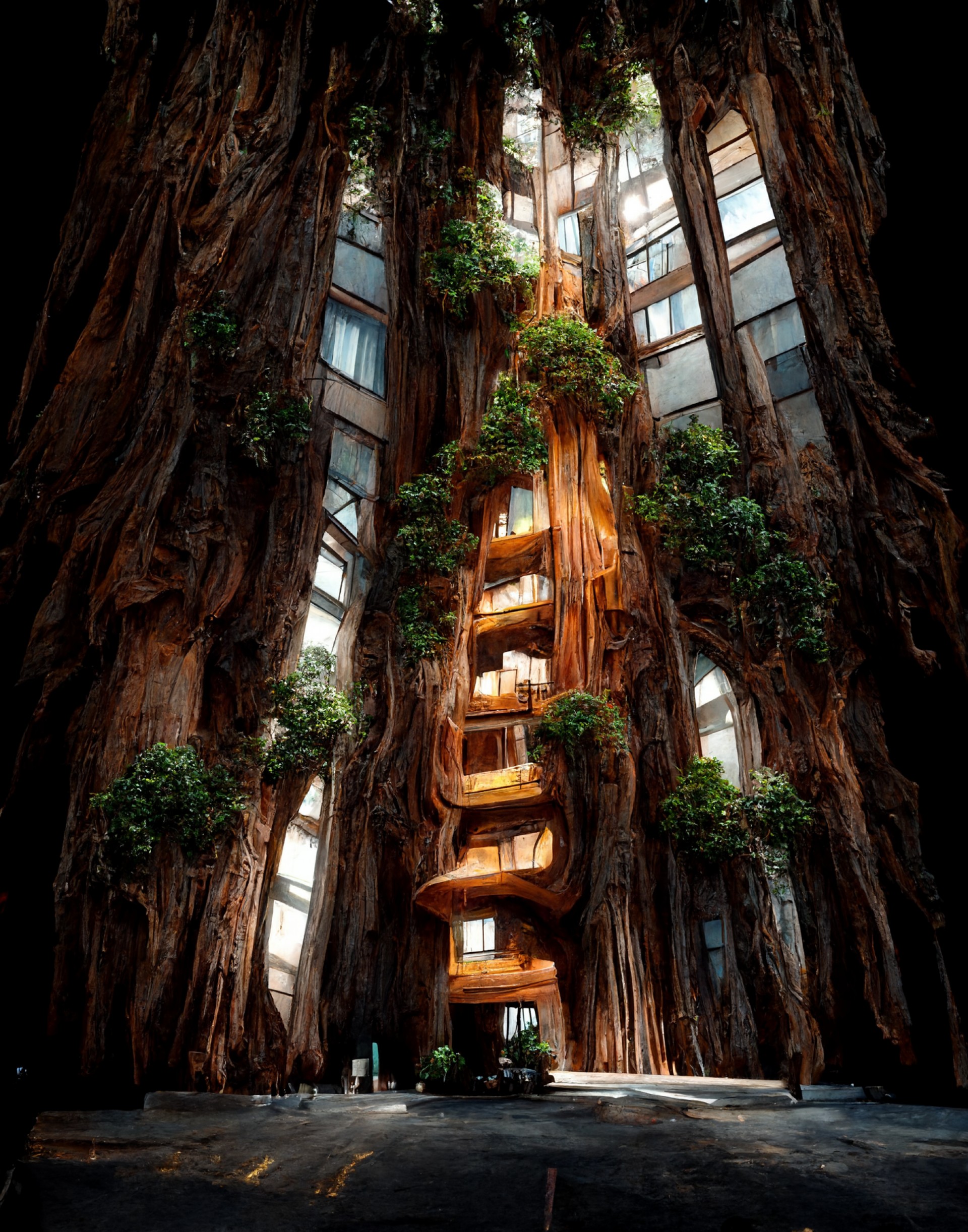 Interior view of the tower with openings to bring in natural light
Interior view of the tower with openings to bring in natural light
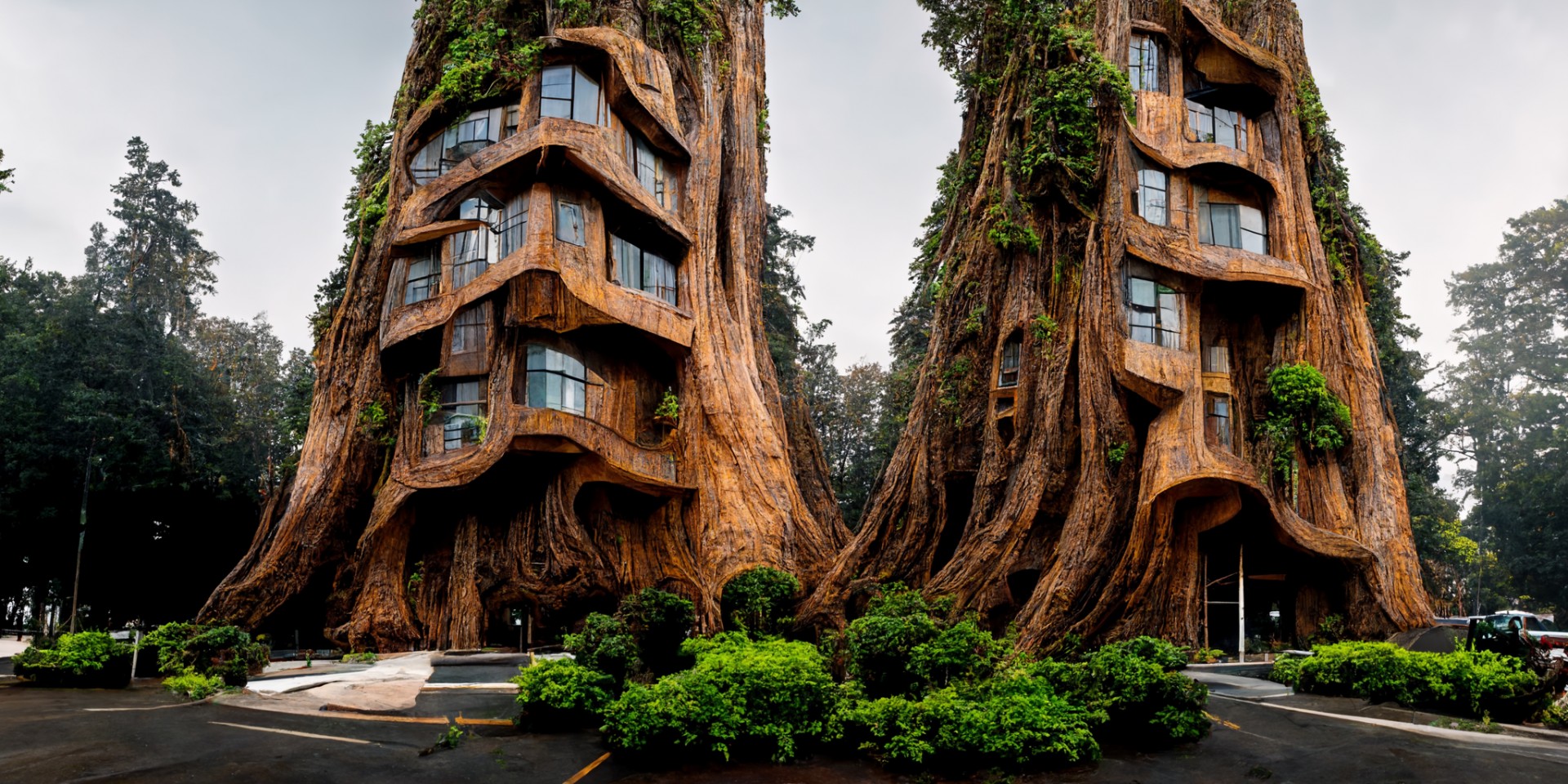 External view of towers in an urban setting
External view of towers in an urban setting
